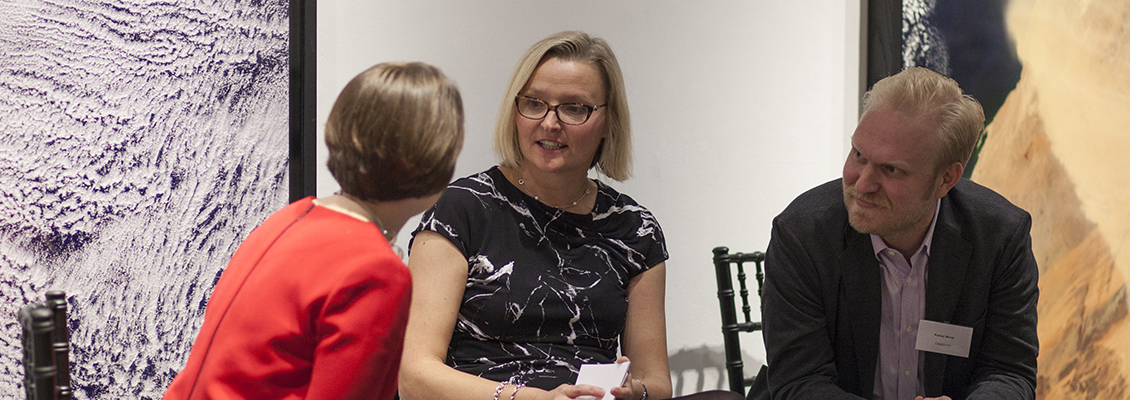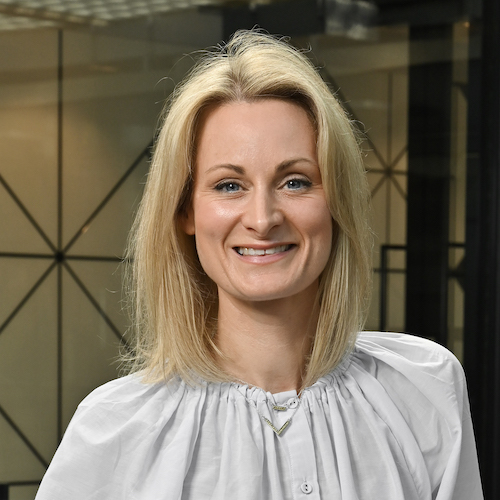Q&A: Barclays’ Head of Corporate Marketing talks campaign activation and ROI
Emily Taylor Gregory

Following the success of FT Longitude’s fourth thought leadership event, which explored how brands can improve ROI from their thought leadership, we invited one of our panelists, Alison Tattersall, to share her insights here. As marketing director for Barclays Corporate Banking, Alison oversees all marketing activity for Barclays corporate, and has 25 years’ experience across the wealth, corporate, retail and payments divisions of the business.
.Alison:
.
.
.
.
.
.
.
.
FT Longitude:
Alison:
.
.
.
.
.
.
FT Longitude:
.
Alison:
.
.
.
.
.
FT Longitude:
.
Alison:
.
.
.
.
.
.
.
.
.
.
.
.
.
.
.
FT Longitude:
Alison:
.
.
.
.
.
.
.
.
.
FT Longitude:
.
Alison:
.
.
.
.
.
.
.
.
FT Longitude:
Alison:
.
.
.
.
.
.
.
.
.
.
FT Longitude:
Alison:
.
.
.
.
.
What does a good thought leadership campaign look like to you?
For me, this comes down to the numbers. I work for a very analytical brand in the financial services sector, so I need to be able to define what we do and what we get out of it in terms of hard facts and figures. Ultimately, my stakeholders want to see evidence of two things: synergy with the wider business objectives, and the ROI. I work closely with the finance team to measure the impact and get them the numbers they need — this approach has helped finance appreciate that marketing is an investment, not a cost.
How is Barclays adjusting to the way the audience’s preferences and habits are changing?
We recently did some work with an agency that said something which has since become a bit of a mantra for me. They said: “Just remember that your reader is selfish, lazy, and ruthless.” Ouch! Since a lot of the content we produce can be lengthy and relatively complex, this really made me think about how we’re using our channels to communicate, and it actually made me realise how succinct we need to be to get people’s attention.
What does that mean for how you get your content into the hands of your readers?
Being clear on your content objectives is key to deciding which different channels you’ll use to communicate it. You have to think about how you’re going to capture attention with a headline, then lead your readers further into that journey. We’ve created some of our best-performing content as a result of Brexit, because people were actively searching for quality information, so I think it’s really important that you make your content timely and relevant, which is something FT Longitude’s recent research on this topic really highlights.
You also need to understand the needs of different sectors. I’m very lucky in that I have an industry marketing team and a regional marketing team, both of which spend time understanding the key issues for each. Customising content allows you to create a genuine connection with your audience, which can be so difficult to find elsewhere.
If I had a team of 100 people, I’d definitely apply more resource to marketing by region and by sector, as that highly targeted content approach shows that you really understand your clients, and allows you to do more exciting and engaging things with it in general.
Who are your most important internal allies in driving activation and ROI?
Arguably, though, everyone in the company is our ally. I was astonished to learn recently that we have over 4.5 million connections on LinkedIn through colleagues, yet only a tiny proportion of our colleagues are sharing our content. I’m on a mission to educate all of my colleagues – but especially those that have client relationships – to leverage their networks and help promote our content more widely.
B2B marketing has changed significantly in recent years, and I think the explosion of channels and the way people interact with content now is phenomenal. It’s fantastic to see our C-suite starting to use our assets as well. Leveraging their networks, and harnessing their knowledge and influence is really exciting to me.
What’s your view on marketing teams doing “fewer but better” thought leadership campaigns?
I certainly agree with the principle. One recent campaign that’s been really important and relevant for us was on the topic of ‘cyber’. Of course there are many new and inventive ways of tackling cyber-crime, and here at Barclays we’ve done a lot of work to educate, inform and protect the businesses we work with. So, I would advise that once you identify a topic which your business can own, you need to run with it and stay focused in your messaging.
As a general observation, I’d say that so much material is getting produced in the B2B space right now that the quality drops sometimes, and I think there’s a real risk of slipping standards as a result.
What’s the most successful campaign activation you’ve seen at Barclays?
I think our cyber campaign really demonstrated the value of both a big idea and wide-reaching activation. It’s the first topic we’ve addressed for a while that spans both B2C and B2B — so both parts of Barclays’ business. To ensure the idea was shared as widely as possible, we created TV ads highlighting the issues and offering practical tips and advice on the B2C side, then we built lots of B2B content off the back of that. The ripple effect of all those things coming together was huge, so I feel that we’ve been able to own that space, which ensures we get maximum impact with our messaging. New areas of online fraud are developing all the time, so we’re definitely looking to build on our cyber research and ensure we’re maintaining our position there. I think it’s all about finding the territory where you have both permission and knowledge for your business.
Finally, what’s your top tip for maximising the ROI on a campaign?
This goes back to my earlier point about better leveraging your colleagues’ networks and social influence. Marketing teams can’t do this alone — you need your allies. I think it’s the responsibility of everyone within an organisation to help share the firm’s insights and expertise. It also gives your marketing tactics a human face, which is so powerful. I think that is where one very real – and very immediate – opportunity lies for all B2B marketing teams.

L-R: Kim Barnes (Chair), Alison Tattersall (Barclays), Parker Ward (Capgemini) – Campaign activation: Maximising ROI from thought leadership event, Nov 2016
Speak to the team
We’ll help you to navigate and overcome any challenges you currently face and learn how to get more out of your content.
Book a meeting
About the author: Emily Taylor Gregory
Emily is our marketing director, responsible for the brand, marketing and communications strategies for FT Longitude. Emily leads our content and events programmes, as well as our speaking engagements and PR activity, working closely with our editorial and research teams to develop and promote insight and best practice at the cutting edge of thought leadership.
Before joining FT Longitude, Emily spent 14 years working in various marketing roles in the publishing and technology sectors.
 |
Tel:
+44 (0)20 7873 4770
|
Tel:
+44 (0)20 7873 4770


